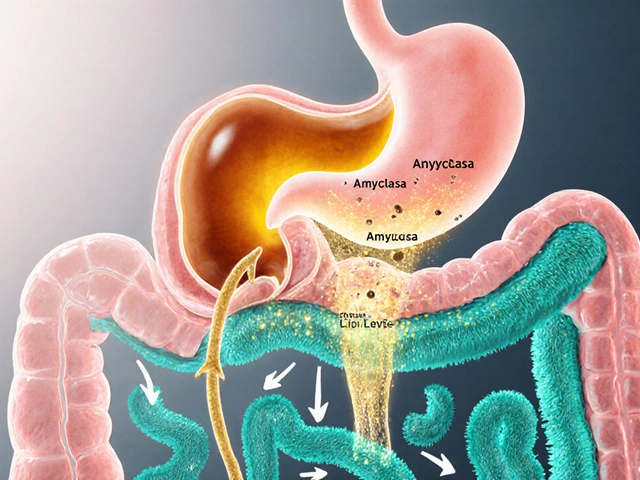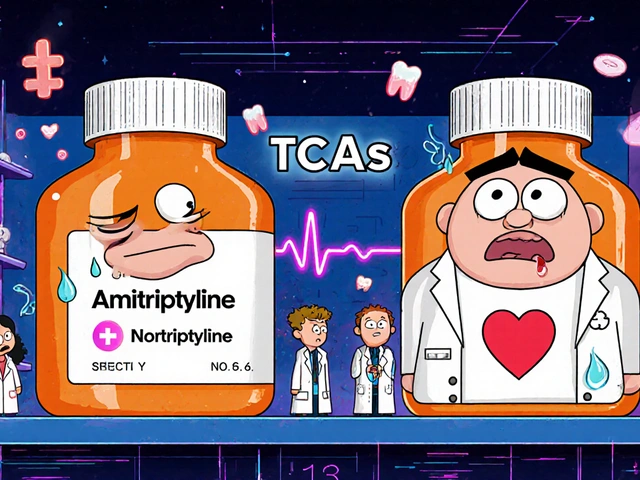Ever heard of a medication that’s banned for Olympic athletes but prescribed to millions of people with heart issues? Trimetazidine, better known by its brand name Vastarel, fits this description. If you think of heart medications, you probably picture the usual suspects like beta blockers or statins—not something that’s landed a few sports stars on the wrong side of a doping scandal. Yet in waiting rooms across Europe and Asia, doctors hand it out daily.
The whole story of Vastarel is way more tangled than it first looks. Some swear it’s saved their lives, while others question if it really has a significant benefit at all. And if you grew up outside of France or Russia, you might have never even heard the name. But there’s a lot going on beneath that unassuming white box, from its chemistry and medical uses to the way it’s been caught up in sports politics and health debates.
What Is Vastarel? Understanding Trimetazidine’s Role in Heart Care
Vastarel is the brand name for a drug called Trimetazidine. It was first developed back in the 1960s by French researchers who were on the hunt for a treatment that could support the heart’s energy needs when oxygen is in short supply. The science here is fascinating—unlike most heart meds, Vastarel doesn’t mess with blood pressure or heart rate. Instead, it targets the metabolism inside heart cells.
Here’s what makes Vastarel different: instead of making your heart work less hard, it helps cells use energy more efficiently. During an episode called angina—where blood flow to the heart is reduced and pain strikes—your heart needs to adapt fast. The drug blocks a specific enzyme that shifts the cell’s power source from fatty acids to glucose. Why care? Because glucose metabolism uses less oxygen, so even if blood flow is limited, your cells keep producing energy. It’s sort of like switching a generator to run on a backup fuel that burns cleaner. That’s why researchers classify Vastarel as a metabolic agent, not a classic anti-anginal pill.
Doctors mainly use Vastarel to treat stable angina pectoris, a type of chest pain that pops up when blood flow to the heart is restricted, usually by clogged arteries. In some countries, you might see it prescribed for tinnitus or vision problems related to poor circulation, but that’s not the norm elsewhere. According to 2013 ESC (European Society of Cardiology) guidelines, Vastarel isn’t the first-line therapy for angina, but it can be used as an add-on if other medications don’t control symptoms well enough.
One thing to keep in mind: Vastarel isn’t available everywhere. The FDA hasn’t approved it in the United States because clinical trials didn’t show enough benefit compared to other therapies. It’s most common in France, Russia, China, and parts of Eastern Europe. French statistics from 2022 say more than 1 million people in the country were taking it at least once that year. Many heart specialists in Europe still see it as a useful add-on when nitroglycerin or beta-blockers alone aren’t cutting it.
But what do patients actually notice? Vastarel is supposed to reduce the frequency of angina attacks and help people exercise more before symptoms kick in. Multiple studies, including a review published in the “European Heart Journal,” have shown modest improvements in exercise tolerance and angina episodes, but the effect isn’t dramatic for everyone. That’s why some doctors see it as a bonus rather than a must-have.

Side Effects, Safety Concerns, and the Doping Controversy
Every medication comes with risks, and Vastarel is no exception. The main concern on most lists? Side effects. Reported issues range from mild to moderately annoying—think stomach upset, dizziness, headaches, and rashes. The most serious but rare side effect is a movement disorder called parkinsonism. In 2012, French health regulators (ANSM) flagged cases where people taking Trimetazidine developed tremors, slow movement, or stiffness, which usually improved when they stopped the medication. Ask any pharmacist in France about this, and they’ll tell you the warnings are now printed in bold on every box.
It’s not a drug for everyone. Vastarel isn’t supposed to be used in people with Parkinson’s disease, severe kidney issues, or movement disorders. Anyone older than 75 is supposed to have special risk assessments before starting. Over time, some countries have narrowed how it’s used. For example, in 2012, the French health authorities restricted it to only angina, not for ear ringing or dizziness as previously allowed.
Why does this medication spark debate in sports? Trimetazidine landed on the World Anti-Doping Agency (WADA) banned list back in 2014. The reason: in theory, its effect on cell metabolism might offer endurance athletes an edge during oxygen-deprived moments—like sprinting up a hill after hours of cycling. No hard evidence shows that it really turns weekend warriors into Tour de France contenders, but the rules are strict. The Russian figure skater Kamila Valieva was at the center of a global controversy after testing positive for the drug in 2022. It’s not just a story for tabloids; it shapes how teams and athletes handle their medication and supplements.
There’s also been talk about safety beyond side effects. Critics point out that many studies on Trimetazidine were relatively short or involved smaller groups of patients than the gold-standard trials used for other heart medications. Supporters argue that decades of real-world use support its reasonable safety profile, but skeptics say absence of evidence isn’t proof of safety. So, doctors weigh the risks, patient history, and what other drugs have already been tried before adding it to the mix.
If you ever have to use Vastarel, or if someone close to you does, it helps to keep a few tips in mind. First, always tell your doctor about every other medication you’re on. Mixing drugs can raise the risk of side effects. Stick to your dosing schedule—usually once or twice daily, with meals to lower the risk of stomach upset. It won’t stop an angina attack in its tracks—that’s what nitroglycerin is for—so keep that emergency spray or tablet handy. And, of course, flag anything odd, like trembling or muscle stiffness, to your doctor fast.

Who Should (and Shouldn’t) Take Vastarel? Patient Stories, Practical Tips, and a Look at the Future
Vastarel’s sweet spot is adults with stable angina who aren’t getting enough relief from first-line treatments. Usually, doctors start low and go slow, especially in older adults. From the patient’s side, day-to-day experience matters: less chest pain during housework, walking further before needing to rest, that sort of thing. There are older folks in Marseille or Yekaterinburg who will swear the pill gave them back an active lifestyle. In a French study from 2021, about 72% of patients taking Vastarel said their angina attacks dropped by at least one per week within three months, compared to before starting.
But not everybody gets such clear benefits. People with shifting or unstable angina, recent heart attacks, or heart failure shouldn’t be taking Vastarel. And—maybe obvious, but needs saying—avoid if you have allergies to the active ingredient or severe kidney disease. Doctors always double-check for potential interactions with other heart medications, and if Parkinson’s runs in your family, that’s a conversation to have before you start.
Can you mix Vastarel with food or alcohol? While food helps with absorption and stomach tolerance, there isn’t a serious interaction. Moderate drinking is usually ok—just don’t get carried away, especially since alcohol can mess with your medications. Traveling? Bring your prescription plus an extra week’s supply if you’re heading to places where the medication isn’t available. Don’t share your pills with others—they could have medical reasons to avoid it, even if your symptoms are similar.
People sometimes wonder if supplements could replace or duplicate Vastarel’s effects. The truth? Nothing in the vitamin aisle works the same way. Omega-3s, coenzyme Q10, or magnesium may support heart health, but they don't shift cell metabolism the way Trimetazidine does. If someone offers you a “natural metabolic booster,” be skeptical.
On the research front, Vastarel’s story isn’t over. New trials are exploring whether it can help people with heart failure or certain types of diabetes, and there’s some curiosity about its role after a stroke to aid neurological recovery. Back in 2023, researchers in Taiwan published a study hinting that Trimetazidine may reduce hospital stays for elderly people with heart rhythm problems, but the evidence isn’t solid enough yet for new recommendations.
Here’s a straightforward piece of advice: any change in your regular angina must be discussed with your doctor, Vastarel or not. If chest pain gets worse, call your clinic. Medications help, but they’re one part of the bigger heart health puzzle—diet, exercise, stress reduction, and, yes, regular checkups still count for a ton.
For now, Vastarel remains a somewhat niche but proven tool for the right patients. If your doctor brings it up, you’re not being handed a miracle pill, but for some, it’s just enough of a tweak to make daily life feel manageable again. And that, more often than not, is the real aim of heart therapy.









Jarod Wooden
July 17, 2025 AT 22:44Vastarel, or trimetazidine, seems to occupy this curious space where clinical utility intersects with some philosophical ambiguities about what it truly means to treat the heart. Fundamentally, it acts as a metabolic modulator, helping myocardial cells utilize oxygen more efficiently. This is critical in ischemic conditions where oxygen supply is compromised.
However, there's an ongoing debate about its status in various pharmacopeias due to concerns about neurological side effects. It's intriguing how medications can carry such dual identities: therapeutic agents in one context and potential risks in another. That tension is a perfect microcosm of medical epistemology.
I also find it fascinating that despite being around for decades, trimetazidine still sparks controversies about its exact mechanisms and broad applicability. Let’s not forget the ethical necessity of balancing benefit against harm while understanding that 'truth' in pharmacology is often provisional.
mike putty
July 20, 2025 AT 04:18This post really illuminates some important aspects of Vastarel that everyday folks might overlook. What caught my attention the most is how it can help improve the heart's metabolism, especially for people dealing with angina. That's huge because managing symptoms effectively and improving quality of life is what really counts for patients.
Still, I appreciate when articles don’t shy away from discussing side effects—even if rare—because that honesty builds trust. One wonders how many patients have been hesitant to try it just due to fear of the unknown. With more transparent dialogue, we could surely improve acceptance and adherence.
Does anyone here have personal experience or maybe a family member who’s been prescribed it? I’d be curious to hear those stories firsthand because they add a crucial human perspective to the science.
Zane Nelson
July 22, 2025 AT 09:51Frankly, this entire discussion seems to lack the rigor and intellectual depth I would expect when dissecting a pharmaceutical product like Vastarel. The nuances of its biochemical interactions must be explained with more scientific precision rather than vague references to 'efficiency'.
The post misses an opportunity to clarify the pharmacokinetics and subtle receptor interactions that define trimetazidine's function. Instead, we get a simplification that might appeal to the masses but does a disservice to the scientifically literate reader.
Moreover, the mention of 'controversies' should be unpacked into a detailed critique of clinical trials, regulatory decisions, and comparative efficacy studies. We deserve better than superficial summaries diluted by public misconceptions.
christian quituisaca
July 24, 2025 AT 15:24I gotta say, I appreciate the clarity in outlining what Vastarel actually does. It’s kinda rare to find explanations that don’t dive deep into jargon but still respect the complexity of heart meds.
The whole metabolism tweak thing is actually pretty cool — like giving the heart a little tune-up to use oxygen smarter. Practical stuff that really helps folks with angina or other ischemic heart conditions.
On the flip side, I've heard about those neuro side effects in some circles and wondered if that limits its use widely. It's like, how do doctors weigh these risks every day? Would love a deeper dive into patient experiences and maybe some stats illustrating the frequency of these side effects. Feel like that’d paint a fuller picture.
But overall, solid read. Thanks for sharing this!
Rex Wang
July 26, 2025 AT 20:58Yeah, this post gives a pretty solid overview. Vastarel’s mechanism as a metabolic agent for the heart is key, especially since it helps in chronic heart ischemia by normalizing cellular energy metabolism. It’s sometimes overlooked compared to more direct vasodilators or beta blockers.
One small critique: it could be helpful to explain more about the specific side effects related to the central nervous system, like dizziness or even Parkinsonian symptoms reported in some cases. Knowing the signs early is important to prevent long-term issues.
Also, the controversy about its approval in some countries but withdrawal in others would be an interesting topic for a deep dive in future posts!
Kayla Reeves
July 29, 2025 AT 02:31Honestly, this whole hype about Vastarel's benefits just strikes me as an overestimation by those desperate to find that miracle cure for heart ailments. We should focus less on glossy marketing and more on medications with proven, large-scale data backing their safety and efficacy.
The mention of 'practical tips' here seems like an empty gesture, as prescribing drugs without comprehensive understanding of their nuanced impact is irresponsible. Side effects often get glossed over until they manifest severely in patients.
Patients deserve clear, evidence-based options, not vague promises cloaked in pharmaceutical jargon. Let's keep the conversation anchored in credible science rather than hopeful speculation.
Javier Garcia
July 31, 2025 AT 08:04I’m curious: does Vastarel have any interactions with more commonly prescribed cardiovascular drugs like beta blockers or ACE inhibitors? The post doesn’t mention this, but it seems pretty important for folks on multiple meds.
Also, how long does it typically take for patients to notice effects? Is it more about symptom management or actual improvement of cardiac function over time? Anyone with clinical or experiential knowledge on this?
Understanding these points could help patients and practitioners optimize treatment plans without unintended consequences.
Donnella Creppel
August 2, 2025 AT 13:38Oh please, before everyone starts circlejerking about how great Vastarel is, can we just address the elephant in the room? The neurological side effects are real and not just a 'controversy' to be dismissed lightly.
People act like it’s some holy grail for heart treatment when in fact there are plenty of better-established options out there. This trimetazidine stuff feels like glorified snake oil with a fancy name. The FDA’s reluctance to fully endorse it should speak volumes.
And the notion of 'practical tips' reeks of marketing spin. If you really cared about patients, you wouldn't shove this drug down their throats without robust, transparent data.
mark Lapardin
August 4, 2025 AT 19:11Engaging with this thread, I notice a lot of mixed sentiments. Technically, Vastarel's modulation of cardiac metabolism through inhibition of long-chain 3-ketoacyl-CoA thiolase (an enzyme in fatty acid oxidation) provides a shift toward glucose oxidation, which is more oxygen-efficient. This biochemical nuance is essential because it underpins its therapeutic rationale in chronic ischemia.
However, the drug's neurotoxicity profile—manifested as extrapyramidal symptoms—is a well-documented risk likely linked to central dopamine receptor antagonism, albeit indirectly. It behooves clinicians to weigh the metabolic benefits against this neuropsychiatric burden.
In summary, Vastarel represents a targeted metabolic intervention with a complex risk-benefit balance warranting judicious patient selection and monitoring.
lee charlie
August 7, 2025 AT 00:44Thanks everyone for the insightful inputs so far. From what I gather, Vastarel seems genuinely useful but comes with a cautionary tale regarding neurological side effects.
I’m wondering about the patient outcomes in real-world settings — like how many actually experience these negative effects and how reversible they are once the medication is stopped? Is it something that only appears after long-term use?
Also, could lifestyle changes be combined effectively with Vastarel therapy to minimize dosage or risks? It’d be great to see more holistic approaches discussed along with pharmacotherapy.
mike putty
August 9, 2025 AT 06:18Following up on the discussion about the neurological risks, from what I understand, while some patients have reported symptoms like tremors or movement disorders, these tend to be rare and often reversible after discontinuation.
That said, it underscores the importance of regular check-ins and monitoring, particularly for elderly patients or those with pre-existing neurological conditions. No medication is without risks, but informed use and vigilance can make a big difference.
Does anyone know if there are specific populations where Vastarel is contraindicated or not recommended? Gathering collective knowledge here could be really beneficial for patient safety.